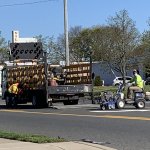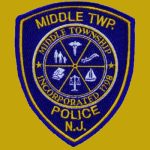This column is on the role and importance of Reserve Studies to community, condominium and homeowner associations.
If you own a condominium or are on the Board of a community or homeowner association, you may have heard of the requirement to obtain a reserve study. Reserve studies are prepared by licensed engineers and are necessary for the good financial health of any association. A reserve study guides the condo board to make educated financial decisions by projecting a financial plan for the association going into the future. Managing an association without a reserve study is like navigating without a map. But do you know what a reserve study is and its purpose?
A reserve study is an in-depth non-invasive analysis and evaluation of an association’s physical assets. The purpose of a reserve study is to identify and analyze the common elements and other components of an association to determine their remaining useful life, that is, how long it will be before these assets will need major repair, rehabilitation or replacement and estimate how much the repair, rehabilitation or replacement will cost at that time.
To understand reserve studies, you must first know what a reserve fund is. Reserve funds are a portion of owner maintenance fees that condominium and homeowner associations set aside for future financial obligations such as major repairs, asset replacement, and rehabilitation projects. How does an association determine how much to set aside in reserve funds? The reserve study is the guide that boards use to make such determinations.
Generally, a reserve study consists of two parts. The first part is assessing the physical condition of assets and common areas that an association is responsible for maintaining and repairing including an analysis of the cost of repair or replacement. There are some guidelines to follow as to whether an asset is to be included in a reserve study. These guidelines include if the asset has a defined expected useful life, if it is an association maintenance responsibility, if the asset has a predictable service life, and if the cost is above a minimum threshold.
Component assets in a reserve study typically include: roofing, building envelope siding, elevators, HVAC systems, fire annunciation and suppression systems, interior common areas such as meeting rooms, hallways and restrooms, exterior common areas including fences, sidewalks, driveways and parking lots as well as recreational amenities such as swimming pools, playgrounds and exercise room equipment.
Condominium unit entry doors, patio doors and windows are usually NOT included in a reserve study because they are considered part of the residential unit owned by each respective condominium unit owner. Therefore, in most cases the association does not have the financial responsibility for repair or replacement. The association does in fact own and control the opening in the wall around the doors and windows and must prevent water and moisture infiltration into the building. While the association does not have financial responsibility for replacement of doors and windows, the association should establish product standards, protocols and installation procedures for replacement of condominium unit entry doors, sliding patio doors and windows.
An experienced engineer or Reserve Specialist will perform an analysis of each asset or component, assess its condition, provide an opinion of the total expected service life and the asset’s remaining useful service life and the cost to repair, rehabilitate or replace the asset. This information is compiled into a component asset schedule. A Reserve Specialist is an engineer that has training and experience preparing reserve studies and has passed rigorous testing to earn the Reserve Specialist certification.
The reserve study will include photos of the assets as they exist at the time the study was performed along with a narrative outlining the observations and findings of the engineer. The more comprehensive the reserve study, the more detailed the narrative report of observations and conditions. This information provides a benchmark for future reference, review and analysis of assets as they age.
Determining expected service life and estimated repair, rehabilitation or replacement cost information is not simply an educated guess or a qualified opinion. This information is compiled from reputable reference guides and databases that undergo peer review and scrutiny before publication. Meticulous
repair, rehabilitation and replacement estimates are comprised of material, labor and/or equipment prices and can be referenced at the unit, assembly or square foot level of detail. For some asset replacement costs, local contractor estimates and actual costs for similar replacement projects may be used.
(IMPORTANT: If the engineer or reserve specialist identifies abnormal conditions or potential structural problems while performing reserve study analysis, further inspections may be necessary. If the conditions warrant invasive or destructive testing, the association may require the services of a full-service engineering firm that specializes in forensic analyses, much like your doctor referring you to a specialist.
Engineering firms that specialize in reserve studies and those that specialize in forensic analyses serve distinct purposes. Reserve Specialists have a thorough understanding of how buildings age and deteriorate and are qualified to determine if an issue is normal or abnormal based on their observations. Forensic engineering firms specialize in invasive or destructive analyses to determine the exact cause of a specific issue and the appropriate remedial action.)
The component asset schedule includes a cumulative dollar amount of the costs of repair, rehabilitation or replacement of all assets. This amount represents the estimated cost for which the association must accumulate funds over the life of the reserve study. For smaller associations, this amount will quite likely be well into six figures. For larger associations with greater common areas and more complex recreational facilities, expect the component asset costs to be significantly larger.
Major projects that impact common areas such as new roofs or a new swimming pool are very costly and require years of planning. Reserve studies include a capital plan in place spanning 30 years or more to fund these major projects. The second part of this three-part column will focus on assessing an association’s long term financial health including its revenues, expenses, and reserve fund balance.
Jim Yost owns Elite Management and Advisory Services, LLC and is Managing Partner for Ocean Property Management Corporation, based in Wildwood. The firms manage numerous community, condominium and homeowner associations in southern New Jersey. He can be reached at yostopmc@comcast.net. Past columns are available online at www.oceanpropertymgmt.com.
Karim Kaspar, Esq. is Senior Counsel with Lowenstein Sandler LLP. He serves as general counsel to numerous community and condominium associations throughout New Jersey. He specializes in complex commercial litigation and real estate matters and has been active and instrumental in the firm’s pro-bono activities. He can be reached at kkaspar@lowenstein.com.
Wildwood Crest – I have given all my money to Mr. Trump but it's not enough. So, I plan to sell my family at the big yardsale coming up in May. Please consider doing the same. He needs us. He is very weak…







